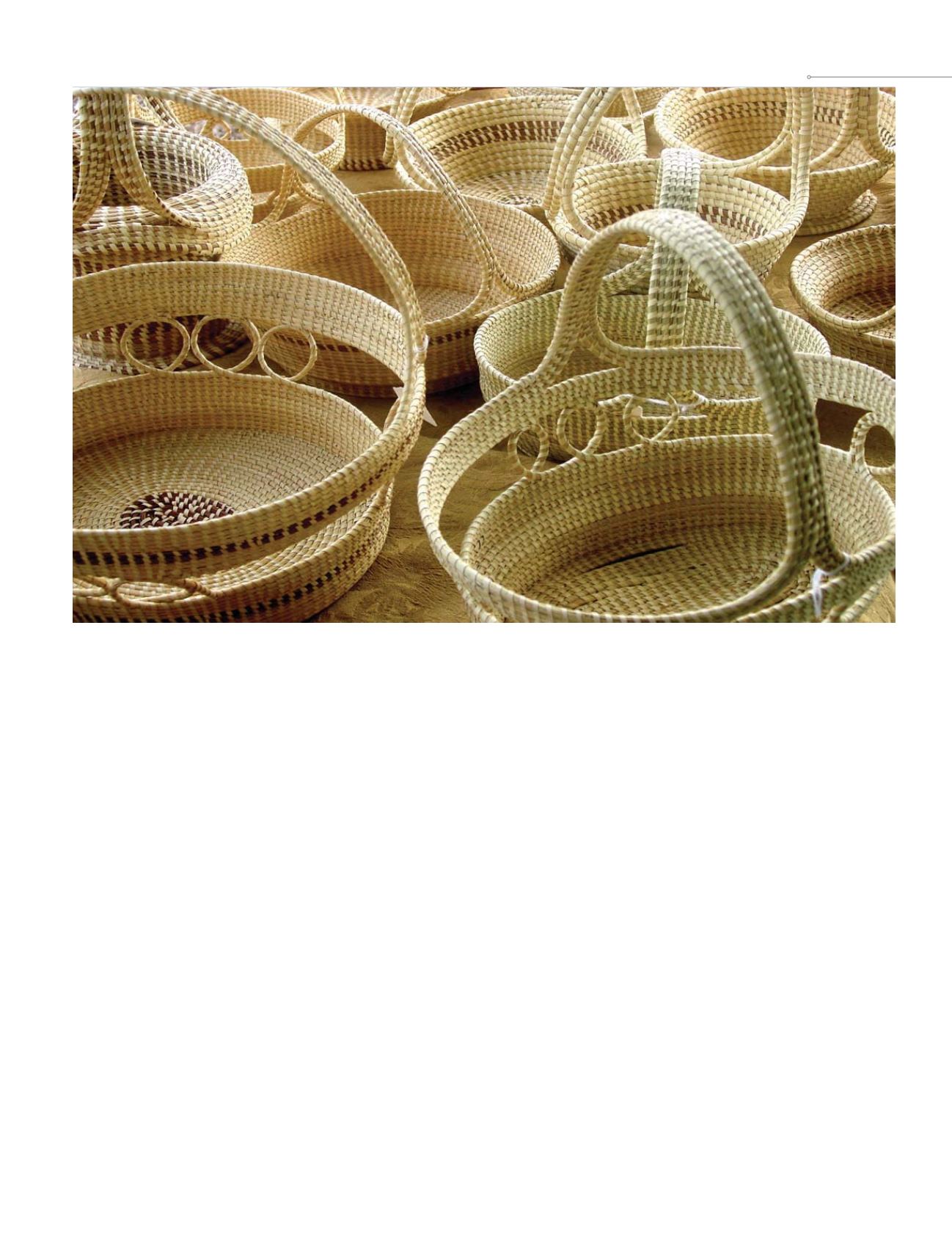

89
www.MountPleasantMagazine.com|
www.ILoveMountPleasant.com|
www.MountPleasantHomes.comtown hall
square feet, providing engaging content at every turn.
“It was very important for us to keep it decorative but
informative at the same time,” said Poplin. “It was equally
as important to involve the people whose stories we were
going to tell.”
In a sense, the new Town Hall is a living, breathing
time capsule – one that will continue to evolve in the
coming years. From the altering impact of Hurricane
Hugo to the industrial boom of the 21st century, visitors
gain knowledge of milestones that helped shape the Mount
Pleasant we know today.
Weavings of sweetgrass, perhaps the most iconic craft
associated with this region, can be found along with
informational text that tells the back story behind the
baskets and of some of the artisans who perfected this art
form.
“South Carolina is filled with so many historical sites,”
said Poplin, who in the past has taken shovel to dirt near
Palmetto Bluff and Rivertowne to uncover fancy cutlery
and sewing needles of former plantation owners. “It’s
rewarding when you discover a really exciting part of the
great story you are trying to tell about the site.”
One discovery that is a part of Town Hall is Wando
pottery. Crafted by American Indians living near the
Wando River 1,200 years ago, these recovered shards could
possibly have once been a part of ceremonial bowls or
drinking jugs. Made by tempering clay with limestone,
they can be found only around the Wando. Some pieces
contain imprinted designs thought to be the result of
pressing cord and fabric onto the surface of the wet clay.
The town’s very first fire pumper, dating back to the
1880s, is also on display. Originally horse-drawn, folks can
get an up-close look at this well-assembled machine that
saved the lives of many. With its crimson color and four
large yellow wheels, it possesses just as much whimsy now
as it did functionality all those years ago.
While the first floor is filled with charming displays
chronicling the town’s journey, the real treasure can be
found a floor up, in the History Room. While small in
size, the objects it holds tell a bigger story. The centerpiece
of the room, which harks back to a simpler time of sewing
circles, is most definitely the Dupré Quilt. Colorful
patches make up a tapestry of gratitude. The makers of
this bright, detailed quilt, composed of 30 eye-catching
squares, went by the name “The Ernest Workers.
While of different backgrounds and faiths, their love
and appreciation for their local physician, Dr. John Dupré,
tied them together.
Each square of the quilt displays the stitched names
or initials of the women behind the artistry. Scatterings of
yellow stars, crescent moons, watering pots, fish, delicate
flowers and blooming roses dance within the intricate
















